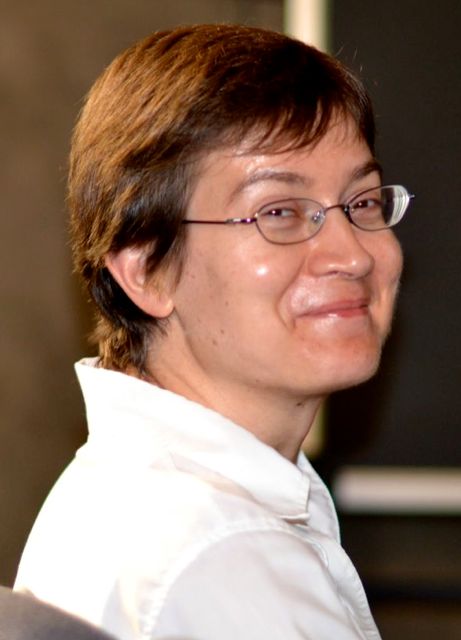Studying at the University of Verona
Here you can find information on the organisational aspects of the Programme, lecture timetables, learning activities and useful contact details for your time at the University, from enrolment to graduation.
Academic calendar
The academic calendar shows the deadlines and scheduled events that are relevant to students, teaching and technical-administrative staff of the University. Public holidays and University closures are also indicated. The academic year normally begins on 1 October each year and ends on 30 September of the following year.
Course calendar
The Academic Calendar sets out the degree programme lecture and exam timetables, as well as the relevant university closure dates..
| Period | From | To |
|---|---|---|
| I sem. | Oct 3, 2016 | Jan 31, 2017 |
| II sem. | Mar 1, 2017 | Jun 9, 2017 |
| Session | From | To |
|---|---|---|
| Sessione invernale Appelli d'esame | Feb 1, 2017 | Feb 28, 2017 |
| Sessione estiva Appelli d'esame | Jun 12, 2017 | Jul 31, 2017 |
| Sessione autunnale Appelli d'esame | Sep 1, 2017 | Sep 29, 2017 |
| Session | From | To |
|---|---|---|
| Sessione estiva Appelli di Laurea | Jul 19, 2017 | Jul 19, 2017 |
| Sessione autunnale Appelli di laurea | Oct 18, 2017 | Oct 18, 2017 |
| Sessione invernale Appelli di laurea | Mar 21, 2018 | Mar 21, 2018 |
| Period | From | To |
|---|---|---|
| Festa di Ognissanti | Nov 1, 2016 | Nov 1, 2016 |
| Festa dell'Immacolata Concezione | Dec 8, 2016 | Dec 8, 2016 |
| Vacanze di Natale | Dec 23, 2016 | Jan 8, 2017 |
| Vacanze di Pasqua | Apr 14, 2017 | Apr 18, 2017 |
| Anniversario della Liberazione | Apr 25, 2017 | Apr 25, 2017 |
| Festa del Lavoro | May 1, 2017 | May 1, 2017 |
| Festa della Repubblica | Jun 2, 2017 | Jun 2, 2017 |
| Vacanze estive | Aug 8, 2017 | Aug 20, 2017 |
Exam calendar
Exam dates and rounds are managed by the relevant Science and Engineering Teaching and Student Services Unit.
To view all the exam sessions available, please use the Exam dashboard on ESSE3.
If you forgot your login details or have problems logging in, please contact the relevant IT HelpDesk, or check the login details recovery web page.
Should you have any doubts or questions, please check the Enrollment FAQs
Academic staff

Bloisi Domenico Daniele
 domenico.bloisi@univr.it
domenico.bloisi@univr.it
 maurizio.boscaini@univr.it
maurizio.boscaini@univr.it
 federico.busato@univr.it
federico.busato@univr.it
 mila.dallapreda@univr.it
mila.dallapreda@univr.it
Study Plan
The Study Plan includes all modules, teaching and learning activities that each student will need to undertake during their time at the University.
Please select your Study Plan based on your enrollment year.
1° Year
| Modules | Credits | TAF | SSD |
|---|
2° Year activated in the A.Y. 2017/2018
| Modules | Credits | TAF | SSD |
|---|
| Modules | Credits | TAF | SSD |
|---|
| Modules | Credits | TAF | SSD |
|---|
| Modules | Credits | TAF | SSD |
|---|
2 courses to be chosen among the followingLegend | Type of training activity (TTA)
TAF (Type of Educational Activity) All courses and activities are classified into different types of educational activities, indicated by a letter.
Cryptography (2017/2018)
Teaching code
4S02797
Teacher
Coordinator
Credits
6
Language
Italian
Scientific Disciplinary Sector (SSD)
INF/01 - INFORMATICS
Period
I sem. dal Oct 2, 2017 al Jan 31, 2018.
Learning outcomes
The course aims at providing the basic elements and computational tools for data encryption, use of cryptography for secure communication, and implementation of cryptographic primitives. Emphasis is given on the structure of the main cryptographic algorithms and protocols, on the definition of the underlying problems, and on the formal tools for analysis of correctness.
Program
Symmetric key cryptography (DES, AES), CBC, public key cryptography (Diffie-Hellman, RSA, BBS, El Gamal), provable security and provably secure cryptosystems, one-way trapdoor functions, pseudo-random bit and function generators, digital signatures (RSA), collision-free hash functions (MD5, SHA1), bit commitment, verifiable secret sharing, Zero-Knowledge, message authentication, agent authentication.
| Author | Title | Publishing house | Year | ISBN | Notes |
|---|---|---|---|---|---|
| B. Schneier | Applied Cryptography (Edizione 2) | John Wiley & Sons | 1996 | 0471117099 | |
| W. Stallings | Cryptography and Network Security: Principles and Practice (Edizione 2) | Prentice Hall | 1999 | 0-13-86901 | |
| Menezes A, Van Oorschot P, Vanstone S | Handbook of Applied Cryptography | CRC Press | 1996 | 0-8493-852 |
Examination Methods
The exam is an oral colloquium on the topics of the program.
The evaluation scale is the following. 18-28 (pure notionistic knowledge), 22-24 (acceptable understanding of the arguments), 25-27 (ability to apply the concepts learned in the course), 28-30 (ability to elaborate autonomous ideas based on the concepts learned in the course).
Type D and Type F activities
Documents and news
-
 PIANO DIDATTICO LM-18 LM-32
(octet-stream, it, 17 KB, 21/09/18)
PIANO DIDATTICO LM-18 LM-32
(octet-stream, it, 17 KB, 21/09/18)
Modules not yet included
Career prospects
Module/Programme news
News for students
There you will find information, resources and services useful during your time at the University (Student’s exam record, your study plan on ESSE3, Distance Learning courses, university email account, office forms, administrative procedures, etc.). You can log into MyUnivr with your GIA login details: only in this way will you be able to receive notification of all the notices from your teachers and your secretariat via email and soon also via the Univr app.
Graduation
Deadlines and administrative fulfilments
For deadlines, administrative fulfilments and notices on graduation sessions, please refer to the Graduation Sessions - Science and Engineering service.
Need to activate a thesis internship
For thesis-related internships, it is not always necessary to activate an internship through the Internship Office. For further information, please consult the dedicated document, which can be found in the 'Documents' section of the Internships and work orientation - Science e Engineering service.
Final examination regulations
List of theses and work experience proposals
Attendance
As stated in the Teaching Regulations for the A.Y. 2022/2023, attendance at the course of study is not mandatory.

 +39 045 802 7980
+39 045 802 7980
































